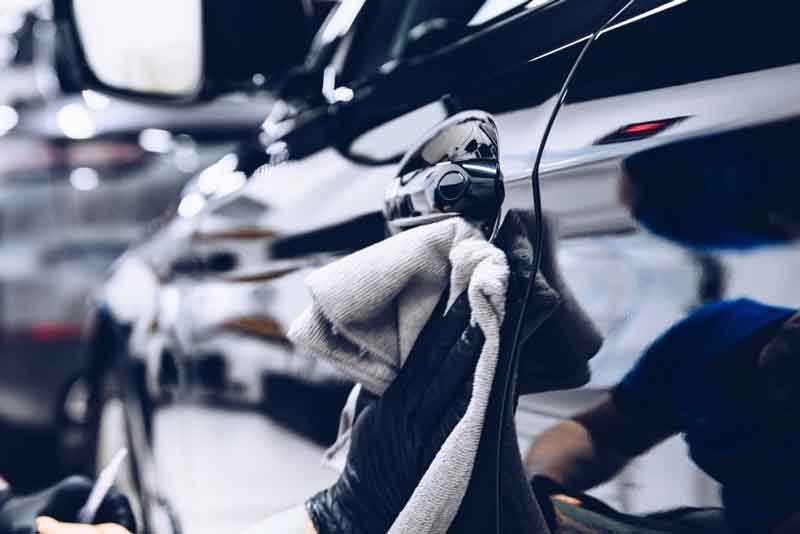Don’t let dull or faded paintwork devalue your automobile. Learn to effectively polish quickly and easily!
Fact: Any car’s exterior finish is the number one way in which it’s judged. And we’re not talking about show cars here. Whether you want to make a good impression on a date, are trying to get the best resale value, or just like to have a good-looking car, why not spend a little time on its paintwork? It’ll do wonders!
When you Should Polish
We certainly wouldn’t recommend polishing your car after each wash. In fact, in most cases, you can go for many months between polishes. But, if you’ve started to notice that your car’s paintwork is dull, has many fine circular scratches (commonly referred to as “swirl marks”), it might be time to consider a polish.
Why Polish a Car?
Even the most careful of users will find that their car’s paintwork will need to be polished from time to time.
It’s important to not confuse polishing with washing, or waxing. Although some products claim to do both, to get the best finish you should treat polishing as a step in itself.
The term “polishing” refers specifically to the use of a cutting agent on a car’s paintwork. Modern cars have what is known as a clear-coat. The clear-coat is a layer of lacquer applied over the solid-colored paint. This gives the paintwork its shine and offers a level of protection to the base coat.
Each scratch you see on your car’s paintwork—whether it be fine swirls, acid rain marks, or hairline scratches—are actually etched into the car’s clear-coat.
Polishing “cuts” away some of that clear-coat to reveal an unblemished surface. Although it sounds drastic, don’t worry too much. The amount of clear-coat removed by your average consumer-level polish in minute—thinner than a human hair in most cases.
Pro Tip:
The aim of polishing a car’s exterior is to remove those fine marks and scratches. If you have deeper scratches that have penetrated beyond the clear-coat, then polishing alone may not be enough to remove them.
Polishing by Hand—Where to Begin
If you’re just starting out in the world of detailing, you’re best off sticking to polishing by hand. While it might not get you the same results as a machine-polisher, the potential for costly mistakes with a machine is much greater.
To start out, you’ll need a liquid polish. Some include “fillers”. This fills-in some deeper scratches that remain in the clear-coat.
You’ll also need something to apply the polish with. A microfiber towel will work but, for optimum results, you may want to invest in a dedicated applicator pad.
Top Tip:
Although not covered in this post, it's recommended that you clay-bar your car beforehand. A clay bar will help remove any fallout or other environmental contaminants that may have become stuck to your car's paintwork. By doing so, you'll have the cleanest and smoothest canvas on which to start polishing.
Ensuring the car is freshly washed and is out of direct sunlight (paint is cool to the touch), begin by applying a few drops of polish to the applicator pad. Don't be tempted to go overboard—a few pea-sized drops should be enough, to begin with.
Working in small, square sections, apply the polish in a circular motion, spreading evenly. You can then use vertical and horizontal swipes to go over the same area. This will ensure the even coverage. At this point, don’t be afraid to top-up the applicator pad if you feel it’s getting dry.
Once you’ve finished applying the product, wait a few minutes, allowing the polish to dry to a haze. It’s best to polish your car panel-by-panel; the longer you wait, the harder it can become for you to remove the polish once dried.
Draw your finger across the hazed polish to see if it’s ready to be removed. If it comes off easily, then it’s time to wipe down. Use a clean microfiber towel to do so, working back and forth in straight lines.
You may notice some dusting at this point. This dust can be removed with another microfiber towel, or simply with the unused side of the towel you’re already using.
Top Tip:
If your car has plastic trim (for example on the bumpers or the scuttles around windows) you’ll want to avoid getting any polish on these surfaces. Ordinary masking tape can help you mark off these areas, which will help avoid getting polish where it shouldn’t be. If you do happen to get a spot or two in these areas, then an alcohol-wipe should be enough to clean it up.
Protect Your Hard Work
Once you’ve finished polishing your car, and ensuring no dust or residue is remaining, now would be the perfect time to lock-in that shine. Do so by applying a layer of good wax to the paintwork. This will help seal-in the fillers from the polish, and leave you with an extra layer of protection from the elements.
And there you have it. A much-improved look for your pride and joy. And all at a fraction of the cost of having it professionally detailed!
